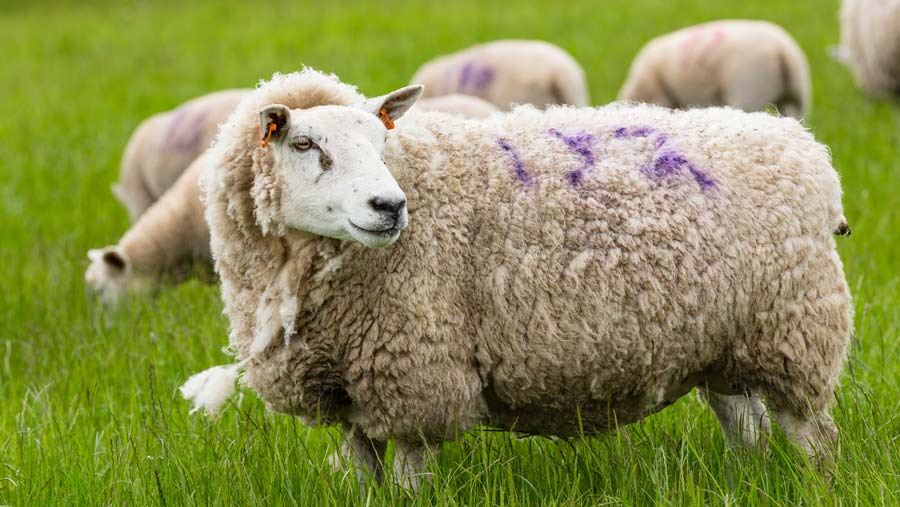Johne’s could be in 50% of flocks, study suggests
 © NFSR/Adobe Stock
© NFSR/Adobe Stock More than half of UK flocks could have elevated culling rates because of Johne’s disease, says a leading sheep researcher reacting to flock survey results.
A growing body of University of Liverpool data show ovine Johne’s disease (OJD) is present on 59-65% of farms surveyed in academic and industry trials, Peers Davies, reader in livestock health and welfare at the university, told the National Sheep Association event in Malvern last week (27 July).
He said eradication of OJD – caused by Mycobacterium avium subspecies paratuberculosis – was “at best difficult and at worst impossible”. However, he stressed the negative impact of the disease could be mitigated if shepherds knew it was there.
See also: How to detect and control Johne’s in sheep
OJD is likely to be costing farms a lot of money, because:
- Flocks with OJD have higher replacement rates – a Hybu Cig Cymru study found infected flocks had 30% replacement rates compared with uninfected flocks at 22-24%
- More one- and two-year-old sheep on the farm reduce flock productivity (lower scanning, lower weaning rates and weights) due to the flock being younger.
“Johne’s infects lambs very early on in life, as it does in calves,” said Dr Davies. “As lambs get older, they are less susceptible to infection.”
He said infection of newborn lambs came mainly from the environment, although other routes were possible, including through colostrum and in utero.
This marked OJD out as slightly different from the other iceberg diseases (caseous lymphadentis, maedi visnae, jaagsiekta/ovine pulmonary adenocarcinoma, Border disease), which do not persist in the environment.
He said researchers suspect many ewes have been infected with OJD as lambs and live with the subclinical disease, spreading it to others before being culled because they are thin and barren.
“A key step is identifying whether the environment in which the young lambs are in is contaminated,” said Dr Davies.
Dr Davies said OJD is unreported and often undiagnosed because:
- Infected lambs have a long, latent infection
- As adults they start shedding the bacteria into the environment themselves
- Some of these sheep will develop clinical disease, but some will be removed before they show clinical symptoms and are instead subclinically affected
- A definitive diagnosis has never been achieved in a very high proportion of cases.
How can I deal with Johne’s?
- Test: Pick older, full-mouthed sheep that are three, four or five years old to optimise your chances of finding Johne’s, if it is there. They need to have good teeth as you want to find ewes losing weight because of Johne’s, rather than something such as tooth loss. Within that cohort, take out the thinnest animals and take a pooled faecal sample
- Vaccinate: A licensed vaccine exists, with good efficacy data from Spain and Australia. Use of the vaccine has increased from 18,500 doses to 50,400 in 2022
- Minimise risk: Have an in-depth discussion with your vet about managing transmission around lambing
